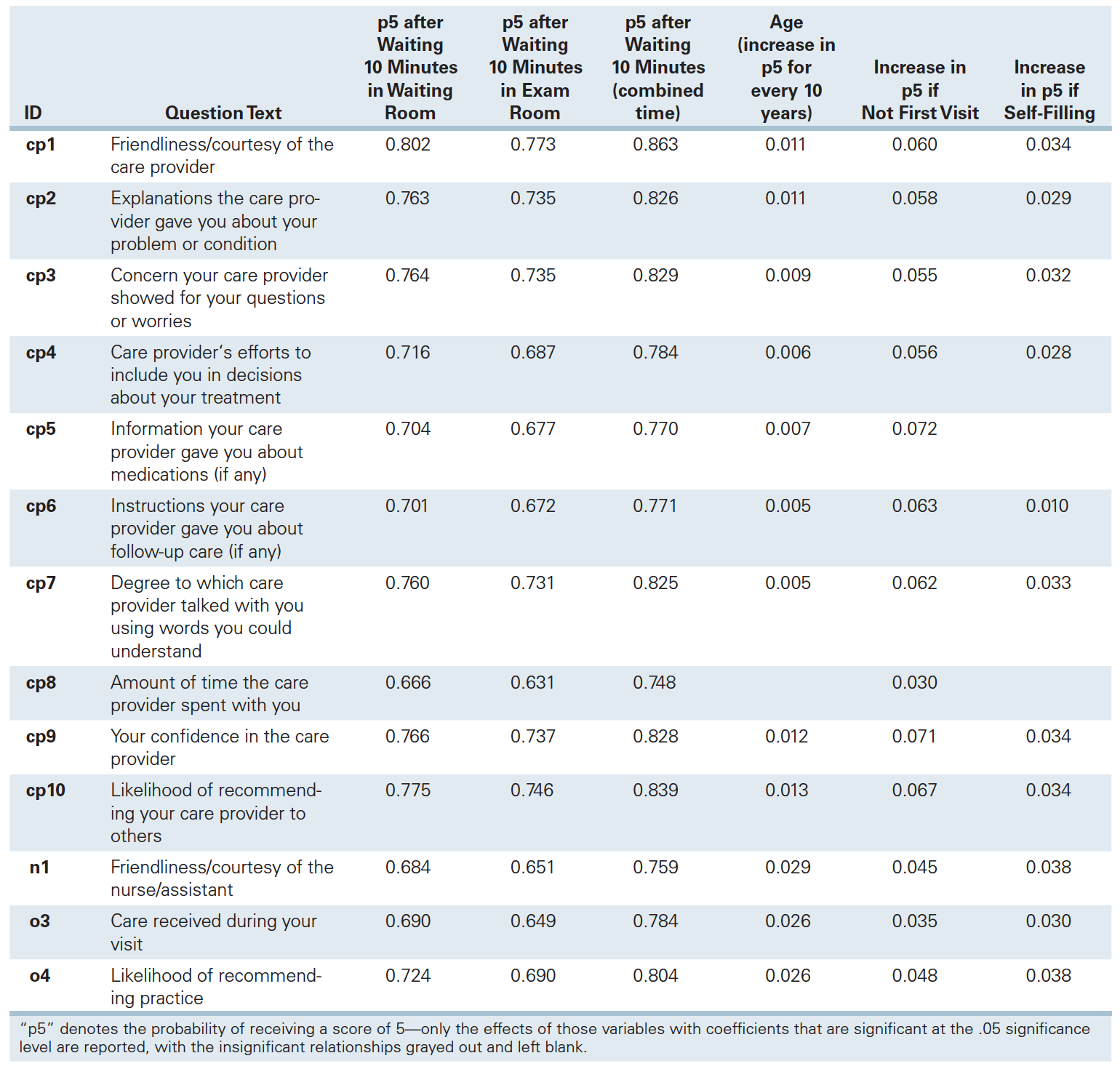Patient confidence in care providers is one of the strongest independent correlates of satisfaction with physician and adherence to treatment (9). Knowing patient adherence to treatment plans is causally linked to health outcomes (10), interventions that improve patient adherence, are likely to be directly linked to improved health outcomes.
For example, Grady Diabetes Clinic in Atlanta showed a 0.12% reduction in A1C for every intervening appointment after the initial appointment during the first year of care, with peak improvement when 6 to 7 clinic visits take place in the first year (11).
Massachusetts General Hospital showed that no-show rates correlate negatively with preventive health screenings and positively with A1C (12). In fact, data from the University of Virginia indicated a 24% increased likelihood of having an A1C above 9% with every 10% increase in missed appointments (13).
As long patient wait times directly reduce patient satisfaction, erode patient perceptions of the care provided and the instructions and explanations about treatment plans, there is likely a direct link between high wait times and worsened health outcomes. At a minimum, a link will likely be established between sub-optimal clinical flows and worsened outcomes.
Apprentice Health’s Scheduling is the best way for clinics to reduce their patient wait times, while still maintaining revenue and respecting physician preferences and workdays. If you agree with us that high-quality operations lead to better patient outcomes, contact us to learn more.
Multiple studies have shown that wait times are a crucial element of patient satisfaction (1) (2) (3).
While wait times are inversely related to patient satisfaction, they also significantly impact the patients’ perception of a physician’s capabilities and decrease the stated confidence in the care provided (4).
To our knowledge, long patient wait times have yet to be assessed as a direct causal link to health outcomes. However, studies have clearly shown the following:
Knowing that long patient wait times are directly linked to patient dissatisfaction, trust, and confidence in clinical decision making, we expect that a direct causal linkage will be established between patient wait times and outcomes in the next few years. Our academic partners will be bolstering this case with more peer-reviewed research in the coming years.High performing care teams don't take patient churn as a given, they see it as an opportunity.
Long patient wait times negatively impact patients, providers, and practices. Athenahealth looked at 4.2 million patient appointments across 13,000 provider brackets and found that patient cancellation rates increased as the wait time increased.
Another study (8) further supports the evidence above. They demonstrated that increases in patient wait times resulted in decreases in all measures related to the patient’s evaluation of the care provided such as confidence (i.e. trust) in their care providers and instructions given about treatment decisions and medications.

source: https://www.ncbi.nlm.nih.gov/pubmed/25181568